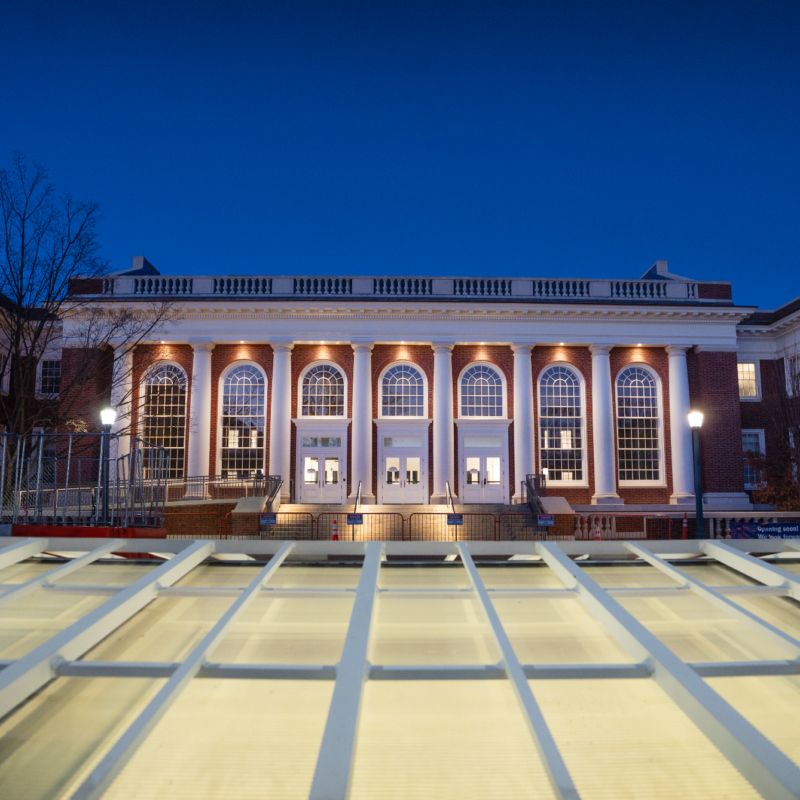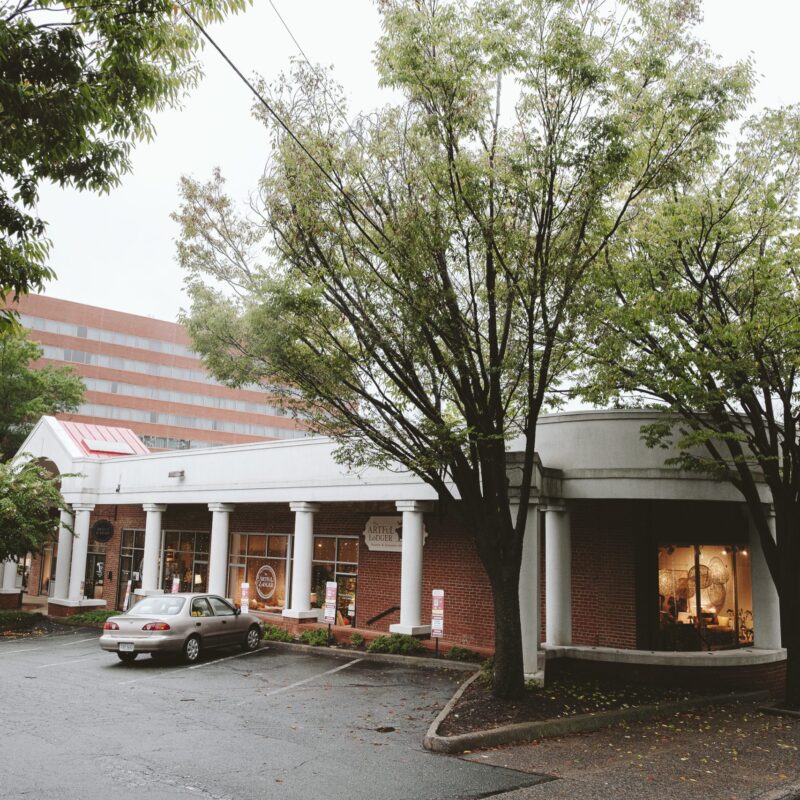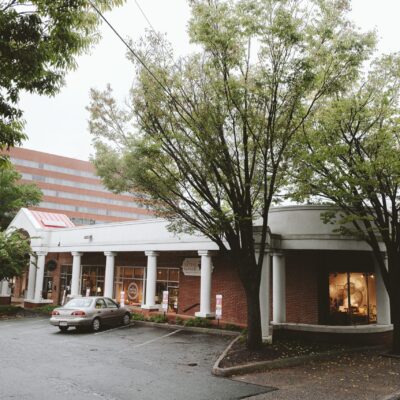Call this a tale of two public designs.
They’re both local, but they’re very different from each other. One is a system of signs that points visitors toward the Downtown Mall. You’ve seen them: They’re in primary colors, enclosed in black metal frames, and they bear the silhouettes of the three presidents we claim as locals.
You’ve seen the other one too. It’s up on top of Carter Mountain, above Monticello. It’s a group of towers, about a dozen of them, sending out signals for cell phones and TV and radio. Though the towers are there to perform a function and not to be looked at, they’re extremely visible: With their vertical structures, they form a sort of pattern that anyone driving on I-64 or walking over the Belmont Bridge can see. Quite literally, this pattern is a landmark.
So where did these two designs come from? And what are they meant to communicate?
A trio’s origins
The Three Presidents signs are, says Ron Higgins, less than a decade old. Now a development official for Albemarle County, Higgins was working as Planning Manager for the City of Charlottesville when, around the year 2000, the notion of designing new “wayfinding” signage arose. A previous group of signs that Higgins calls “very elegant”—white lettering on a firethorn red background—had become worn. “It was beautiful when
 |
it went on, but it weathered a mute reddish brown,” Higgins remembers. Downtown merchants, meanwhile, were asking city officials for something brighter and more jazzy. “They would come to the meetings with sketches they put together,” Higgins says. “They had all kinds of colors: red, green, yellow, blue.”
And they had a question, Higgins says: “What is a recognizable symbol that could identify Downtown?” Somehow, Jefferson and Madison and Monroe—who appear in bas-relief on the front of City Hall, and as Higgins points out, are known to have set foot in nearby Court Square—became the answer. In fact, the actual silhouette of the City Hall figures became the logo for the new signs. Bids came in, the signs were produced, and a fairly standard public design process, with government and business working in committee, was complete. Charlottesville’s historic pedigree was now headlining its image.
Spelling an unknown word
As you might imagine, the Carter Mountain tower array has developed more gradually. Henry Chiles, whose Crown Orchard Company owns the $7.75 million piece of land where the towers sit (along with Carter Mountain Orchard and Chiles Peach Orchard), says he thinks towers first came to the mountain about a century ago. Now, the existing towers range in age from three years to nearly three decades, and they’re owned by a handful of companies both local (the Charlottesville Quality Cable Operating Company) and national (Atlanta-based American Tower Company).
 |
Chiles says the FCC is in charge of the towers: who can put them up and for what purpose. Obviously, towers need to be on elevated sites. But Carter Mountain is a big piece of land. Why put a particular tower, say, 75′ from an existing one, rather than 50′ or 100′? As you might imagine, calling the FCC to ask about the intricacies of tower siting—even if you’re just interested in how a local landmark, an exact pattern of verticals, gets created—doesn’t get you very far. (If I didn’t have an FBI file before, I bet I have one now.)
So, for the purposes of this story, let’s just say that the tower array, visible as it is, was created more or less by accident. Like the wayfinding signs, the array was created by government and business in tandem, but in this case, befitting the larger structures, both entities are bigger in scale: an impenetrable federal bureaucracy, and the defining industry of our era—telecommunications. Over forces like these, local government has little sway, and the notion of “design”—as in, someone’s thoughtful aesthetic decisions—seems misplaced. If the tower array is spelling anything, it’s spelling the word “random.”
Lasting impact
The Three Presidents signs are likely nearing the end of their useful life. City spokesman Ric Barrick says the design has “pretty much run its course.” New wayfinding designs will be rolled out over the next year or two, incorporating the latest thinking about how visitors should be directed to think about and move around in Charlottesville.
The tower array, meanwhile, has been around much longer than the Three Presidents signs and will likely stay longer, too. Perhaps it’s more correct to say it “is being designed” than that it “was designed,” since new towers could conceivably join its ranks. And if they do—even though thousands of people pass within sight of them daily, and many of those people are talking on cell phones or listening to the radio—most of them likely will never even notice.





